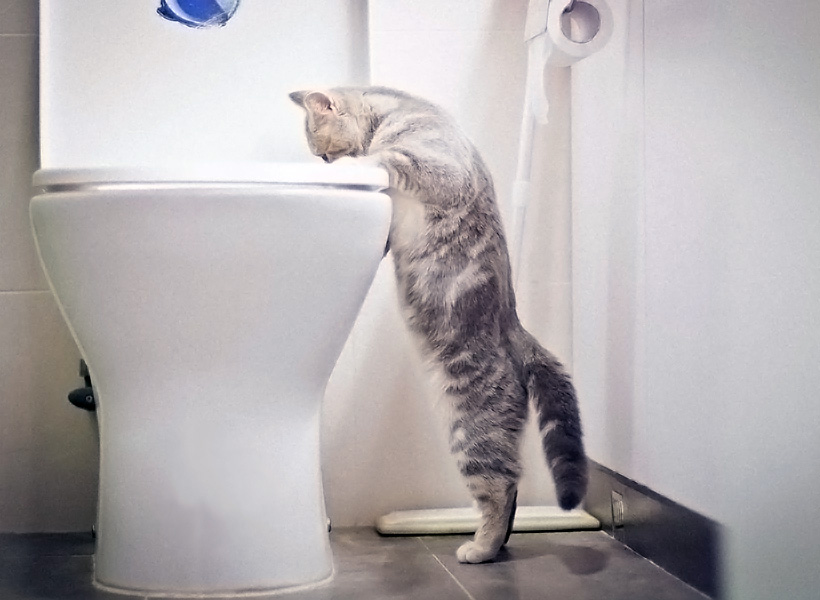The author is making several great points about Can You Flush Cat Poo or Litter Down the Toilet? as a whole in the content in the next paragraphs.

Introduction
As feline owners, it's necessary to be mindful of exactly how we get rid of our feline pals' waste. While it may seem convenient to purge pet cat poop down the commode, this method can have harmful consequences for both the environment and human wellness.
Ecological Impact
Flushing feline poop introduces hazardous pathogens and bloodsuckers right into the supply of water, posing a significant threat to water communities. These impurities can negatively influence marine life and compromise water top quality.
Health and wellness Risks
Along with environmental problems, flushing pet cat waste can likewise posture health and wellness threats to humans. Feline feces might contain Toxoplasma gondii, a parasite that can trigger toxoplasmosis-- a possibly severe health problem, particularly for expecting females and people with weakened immune systems.
Alternatives to Flushing
Luckily, there are safer and much more accountable means to dispose of cat poop. Consider the complying with options:
1. Scoop and Dispose in Trash
The most typical method of throwing away pet cat poop is to scoop it into a biodegradable bag and throw it in the garbage. Make sure to utilize a specialized trash scoop and deal with the waste without delay.
2. Usage Biodegradable Litter
Choose biodegradable pet cat trash made from materials such as corn or wheat. These litters are environmentally friendly and can be securely thrown away in the trash.
3. Hide in the Yard
If you have a lawn, consider hiding feline waste in a designated location away from vegetable yards and water resources. Be sure to dig deep adequate to prevent contamination of groundwater.
4. Mount a Pet Waste Disposal System
Invest in a family pet waste disposal system especially designed for feline waste. These systems make use of enzymes to break down the waste, decreasing smell and ecological influence.
Conclusion
Accountable pet dog ownership prolongs past offering food and shelter-- it likewise entails correct waste management. By refraining from flushing pet cat poop down the commode and opting for alternative disposal methods, we can reduce our environmental impact and secure human health and wellness.
Why Can’t I Flush Cat Poop?
It Spreads a Parasite
Cats are frequently infected with a parasite called toxoplasma gondii. The parasite causes an infection called toxoplasmosis. It is usually harmless to cats. The parasite only uses cat poop as a host for its eggs. Otherwise, the cat’s immune system usually keeps the infection at low enough levels to maintain its own health. But it does not stop the develop of eggs. These eggs are tiny and surprisingly tough. They may survive for a year before they begin to grow. But that’s the problem.
Our wastewater system is not designed to deal with toxoplasmosis eggs. Instead, most eggs will flush from your toilet into sewers and wastewater management plants. After the sewage is treated for many other harmful things in it, it is typically released into local rivers, lakes, or oceans. Here, the toxoplasmosis eggs can find new hosts, including starfish, crabs, otters, and many other wildlife. For many, this is a significant risk to their health. Toxoplasmosis can also end up infecting water sources that are important for agriculture, which means our deer, pigs, and sheep can get infected too.
Is There Risk to Humans?
There can be a risk to human life from flushing cat poop down the toilet. If you do so, the parasites from your cat’s poop can end up in shellfish, game animals, or livestock. If this meat is then served raw or undercooked, the people who eat it can get sick.
In fact, according to the CDC, 40 million people in the United States are infected with toxoplasma gondii. They get it from exposure to infected seafood, or from some kind of cat poop contamination, like drinking from a stream that is contaminated or touching anything that has come into contact with cat poop. That includes just cleaning a cat litter box.
Most people who get infected with these parasites will not develop any symptoms. However, for pregnant women or for those with compromised immune systems, the parasite can cause severe health problems.
How to Handle Cat Poop
The best way to handle cat poop is actually to clean the box more often. The eggs that the parasite sheds will not become active until one to five days after the cat poops. That means that if you clean daily, you’re much less likely to come into direct contact with infectious eggs.
That said, always dispose of cat poop in the garbage and not down the toilet. Wash your hands before and after you clean the litter box, and bring the bag of poop right outside to your garbage bins.
https://trenchlesssolutionsusa.com/why-cant-i-flush-cat-poop/

I am just very fascinated by How to Dispose of Cat Poop and Litter Without Plastic Bags and I hope you appreciated our article. Do you know about another person who is in the market for the niche? Take a moment to promote it. We cherish reading our article about Can You Flush Cat Poop Down The Toilet?.
Recurring Service Plans